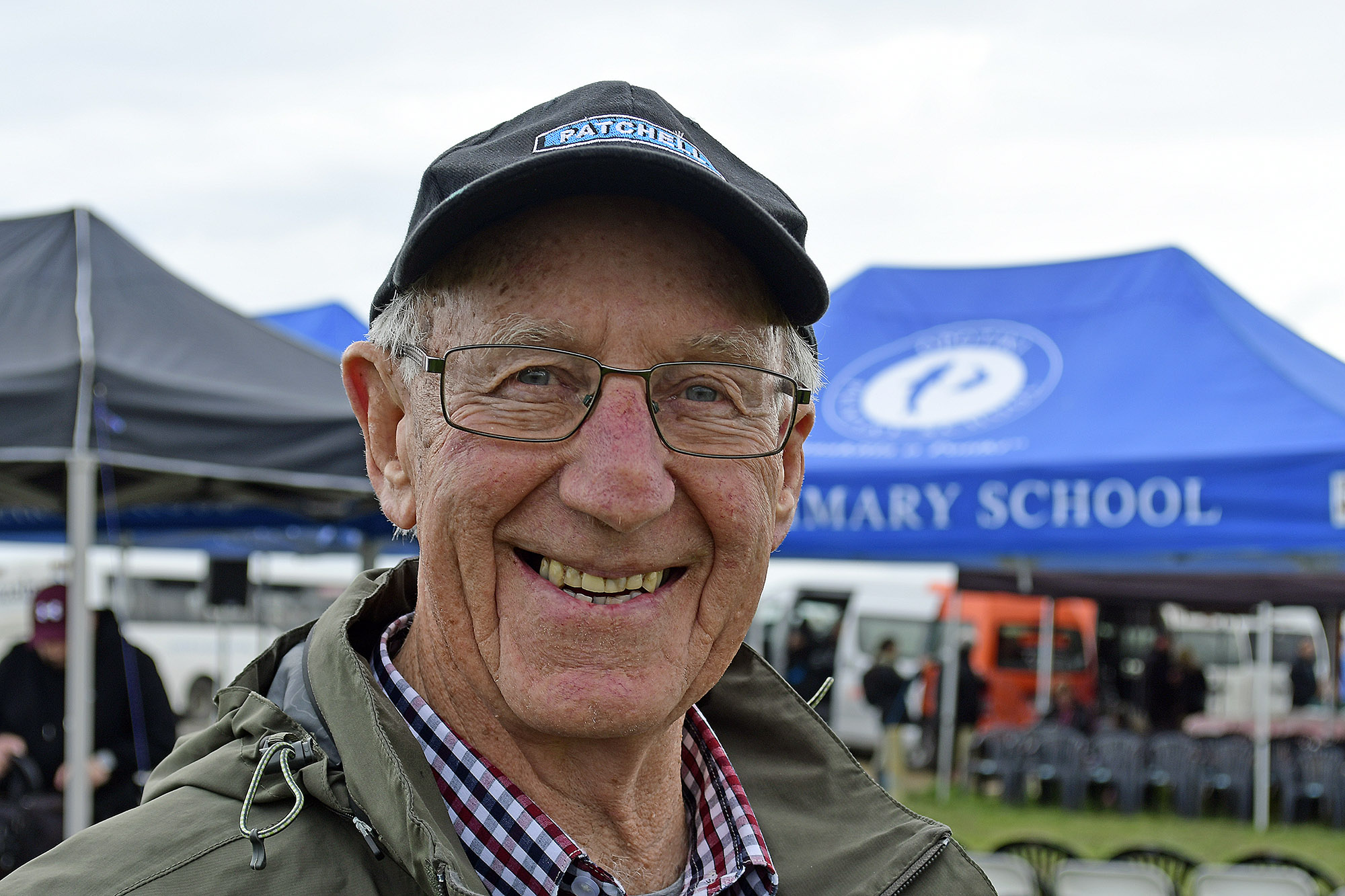Beyond expectations and onward

PROJECT OVERSIGHT: John Galbraith’s oversight has been one of the strengths of the Ōpōtiki Harbour Project. Photos Sven Carlsson E4956-01
Martin Johnson
PRAISE, anecdotes and future commitments were aired as Ōpōtiki Harbour was officially opened on Friday.
For former Ōpōtiki Mayor John Forbes, who returned from Australia for the event, it was an opportunity to recall the origins of the projects and his early involvement following his election to the council in the late 1980s.
These were tough times, he said, with the dairy factory, hospital, clothing factories, bacon factory and retailers closing down, and the council at the time relaxing planning regulations to support the kiwifruit industry and help it expand.
Their aquaculture journey began in the late 1990s when visitors from Nelson explained the concept to iwi leaders.

“Foresight meant an application for water space was made, which helped beat a moratorium that the government at the time was imposing,” he said.
“We organised a three-day trip to Nelson so we could get some insight into the industry – and that trip inspired all of us. It was obvious this could help rebuild our community spirit.”
The feasibility of a harbour entrance was investigated and sometime later, a meeting was organised with the ministers of finance and economic development in Wellington, the late Sir Michael Cullen and the late Jim Anderton.
“Michael Cullen assured us that if the numbers stacked up the way we said they would, then in all likelihood the government would be here with us – so thank you, Government.”
Studies of the dynamics of a harbour entrance, consent applications and submissions followed.
“It was great that there were about 100 submissions in support for every submission against,” Mr Forbes said. “One of the hallmarks of this project has been the strong community support.”

Bay of Plenty Regional Council provided an $18 million grant in 2013, lifting it to $20 million in 2015.
A couple of different harbour construction plans were discussed and misfired before a solution was brokered and announced in February of 2020.
“I think it was the potential scale of aquaculture that swayed the government into going ahead,” Mr Forbes said.
“At that time, when it was signed off and the money was put in place, I high-tailed it out of here, tucked in the mayoralty and headed off to Australia to look after my grandkids.”
Mr Forbes said there was a long list of important contributors to the project.
“I want to acknowledge former deputy mayor Selby Fisher, who did not worry too much about process, and former councillor Louis Rapihana,” he said.
Bay Trust, Toi Eda and Horizon Energy had made contributions at critical times, “just when things were needed”.
Science and engineering had been paramount for the project and Mr Forbes noted the contributions of marine farming consultant John Wilson from Nelson, the Cawthron Institute and Waikato University, engineers from DHI and HEB, in particular David Wyeth, and Rosie Mercer from Auckland Harbour Board.
“Ian Craig’s financial acumen has made a huge difference to this project and Peter Vitasovich, your ability around aquaculture and sea farming has been critically important,” Mr Forbes said.
Project director John Galbraith’s oversight was one of the real strengths of the project.
“[Former council chief executive] Aileen Lawrie, your steadfast attitude and technical abilities have been central to the success of the project,” Mr Forbes said.
“Without it, I think the whole thing would have been put on the shelf years ago.”
Te Tāwharau o te Whakatōhea chairman Robert Edwards said what had been achieved was “beyond expectations” and that the next challenge was the construction of the Ōpōtiki industrial, marina complex “straight across the river” – and to continue the development of the mussel farm, taking the production to 15,000 tonnes per year and to consolidate the mussel industry in Ōpōtiki.
“This has been a long journey,” he said.